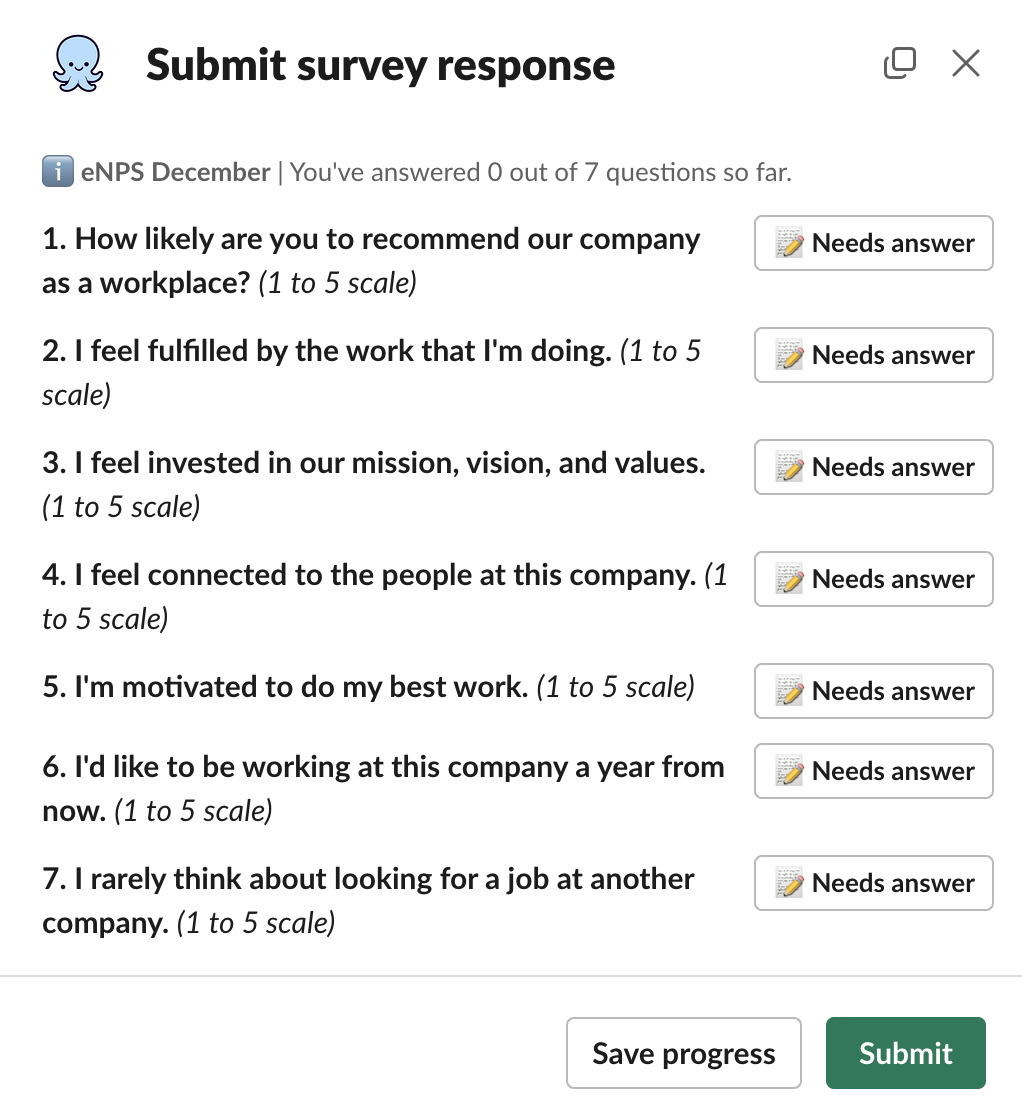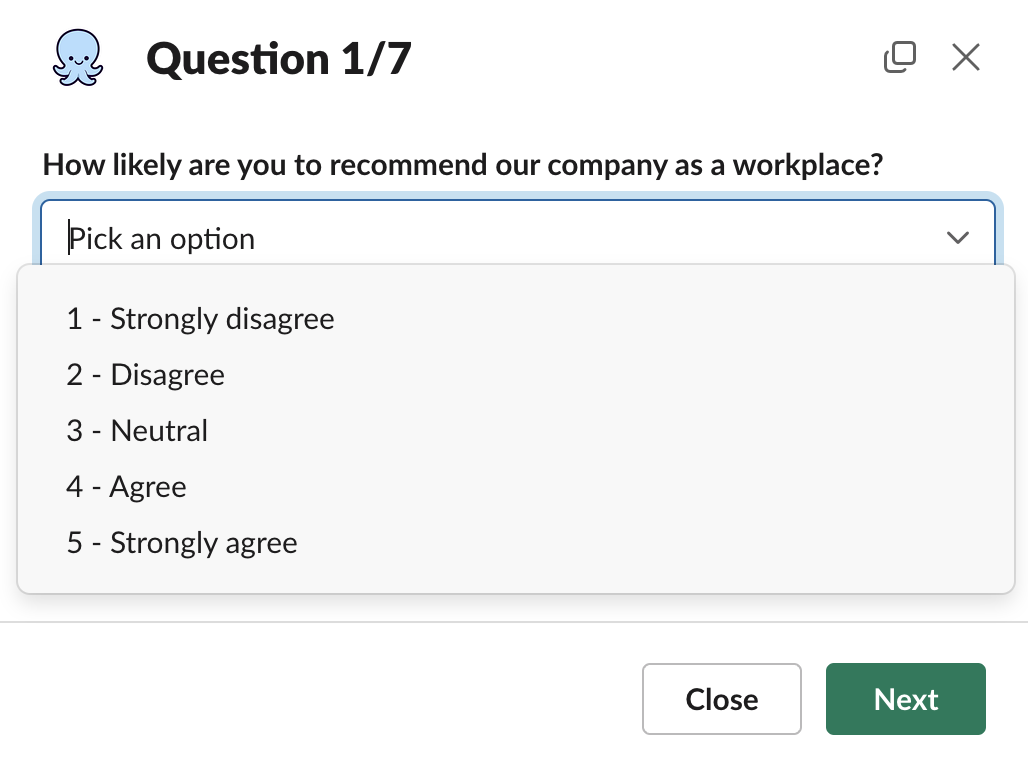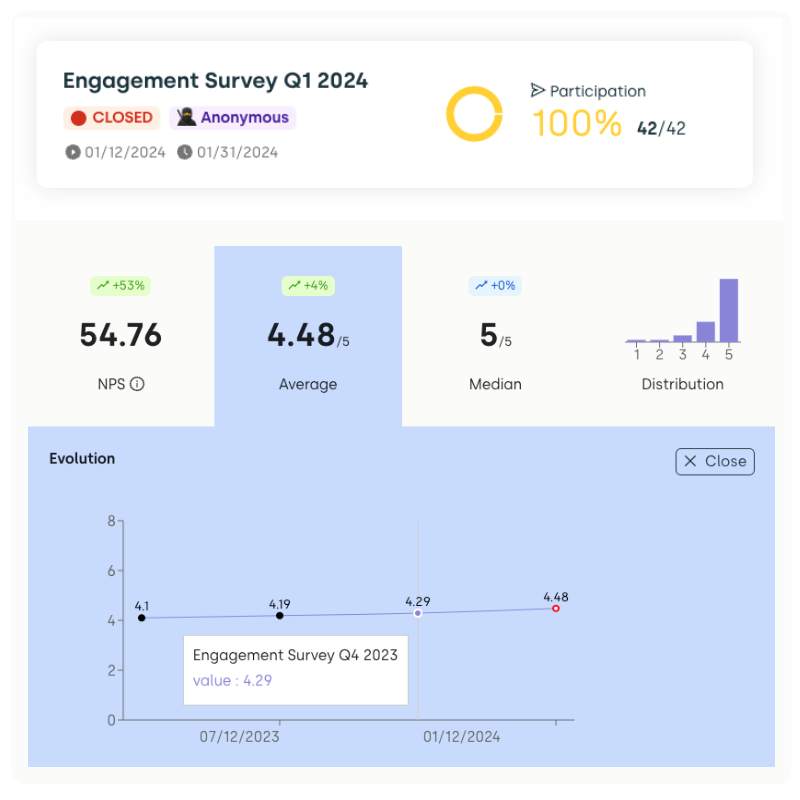Gather employee feedback in Slack
BuddiesHR can be used to gather employee feedback directly in Slack thanks to its app called Pulsy. In this page you'll learn why it's important to gather employee feedback, why Slack is the perfect place for that and how to concretly gather employee feedback (anonymously or not).



Why is it important to gather employee feedback?
It is important to keep the door open for anonymous feedback as well as run feedback surveys regularly in order to listen to what employees have to say.
Having an employee feedback culture has many benefits:
- It builds Trust and Loyalty
- You're able to anticipate employee burnout
- It can prevent employee churn
Why slack is the right place for asking feedback to your employees?

How Buddieshr can be used to gather feedback?
By installing Pulsy Slack app from BuddiesHR, you'll be able to run recurring surveys asking for feedback.
Here are the steps to start collecting anonymous feedback in Slack:
- Step 1: Install Pulsy Survey for Slack
- Step 2: Create a recurring survey (eNPS weekly for instance)
- Step 3: Publish the survey and start collecting feedback.



Best practices for running Slack surveys
To get the most out of Pulsy, it helps to set up surveys in a way that encourages participation and trust:
- Keep surveys short and simple (3–5 questions max).
- Mix anonymous and non-anonymous formats depending on context.
- Share results transparently so employees see that their feedback is valued.
- Use clear, friendly language to encourage honest answers.
How employee feedback in Slack improves engagement
Running surveys where employees already work reduces friction and increases honesty. Over time, teams build a culture of openness where feedback is part of daily communication. This leads to better engagement, quicker problem-solving, and a healthier workplace.
For more tips on boosting culture and collaboration, check out our guide on Slack best practices for remote teams and our walkthrough of Slack notification settings.
Why Pulsy is the best option for collecting employee feedback?
Pulsy has all the features to make employee feedback easy. It's fully integrated into Slack:
- You can ask for clarifications while keeping the conversation anonymous
- Visualize the answers in a dashboard
- Be notified for new submissions
- Access a question bank with dozens of examples
- Track eNPS over time
- Access incomplete responses🌟Pulsy's super power!
- Have an anonymous chat with responders🌟Pulsy's super power!
- Employees don't leave Slack to answer and don't have to create any other account.
Pulsy is a top performing app on Slack
FAQ
Collecting anonymous feedback versus non-anonymous feedback
Running anonymous feedbacks is proven to give more contructive answers.
What's the good frequency for asking anonymous employee feedback?
Every 2 weeks or once a month is a good frequency for asking feedback to the employees.
Can I run Slack surveys during busy work periods?
Yes, keep surveys short and schedule them at times when employees aren’t overloaded. Pulsy also allows recurring surveys, so you don’t have to manually track timing.
How do I ensure employees actually respond to surveys?
Keeping surveys inside Slack, where employees already work, removes friction. Features like reminders and short formats boost participation rates.
Can feedback be connected to other tools like Google Drive or dashboards?
Results can be exported and combined with external reporting tools for deeper insights, making it easy to share findings with leadership.
Is feedback stored securely in Pulsy?
Yes. Pulsy keeps responses inside Slack and your connected dashboard. Employees don’t have to create extra accounts, which also reduces privacy risks.



